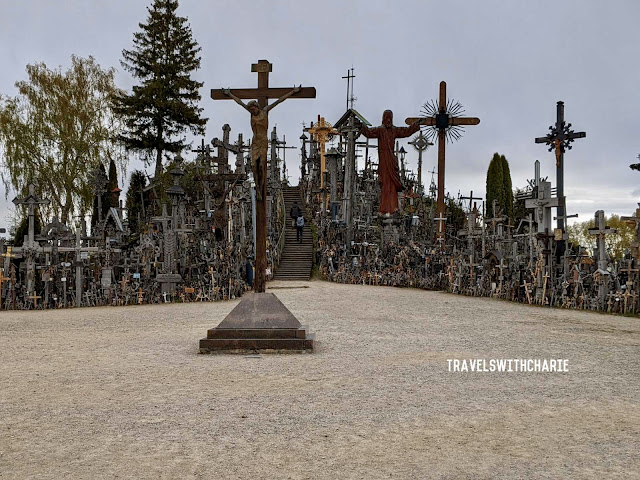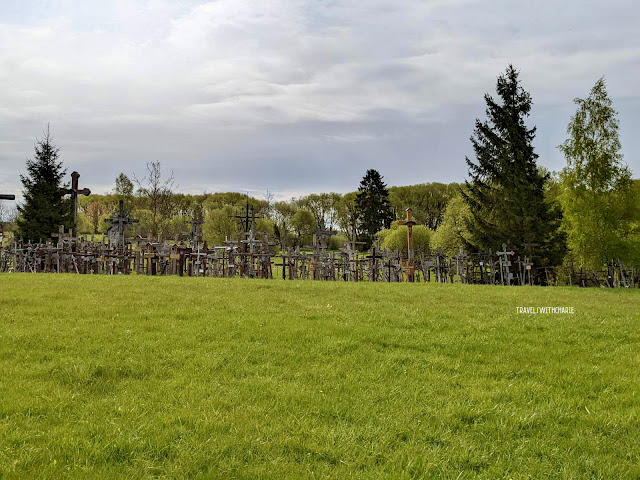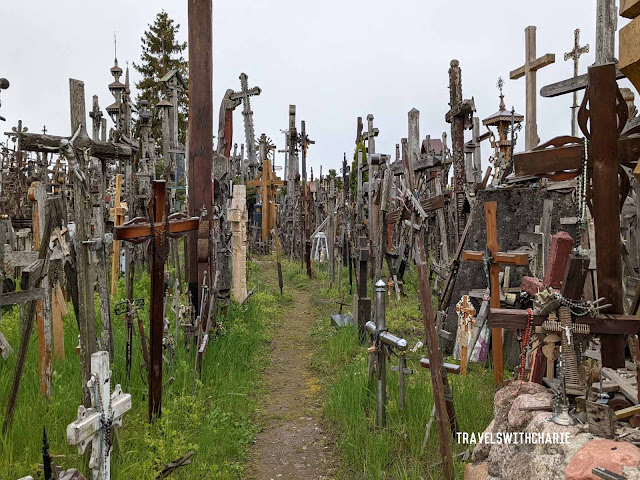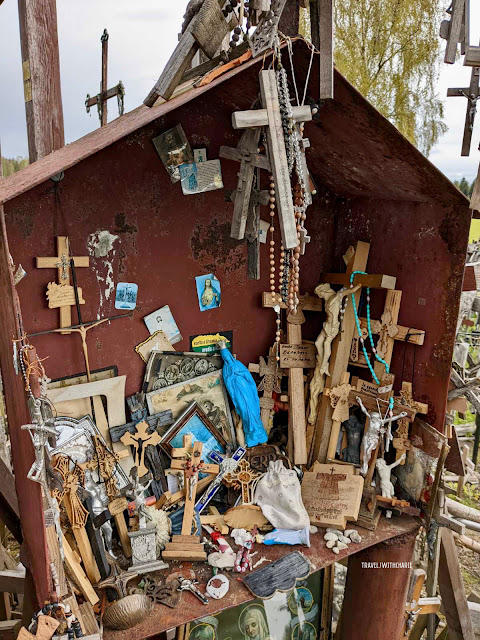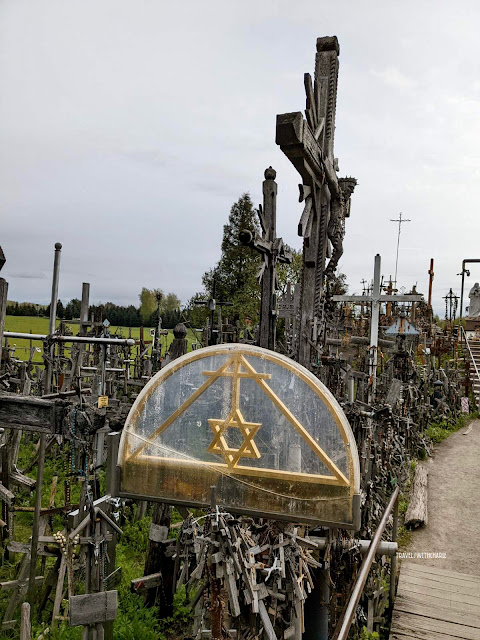In 2006, it was estimated there were over a 100,000 crosses, crucifixes, rosaries and religious icons on Kryžiu Kalnas or Hill of Crosses near Siauliai in northern Lithuania. The Hill was bulldozed by the Russians in the 1960s and 1970s but the people were not deterred nor their faith shaken. Today more pilgrims come and leave their crosses, laden with prayers and special intentions.
The crosses started appearing on this hill after 1831 when relatives of victims of the revolts against the Russian regime placed crosses here to commemorate their dead.

At the end of the 19th century, the apparition of Mary, the Mother of God, brought more visitors to the site. Large and small crosses and crucifixes of different styles have since found its way to the Hill.
Some areas are more densely populated with crosses than others.
Visitors are allowed to erect a cross without a permit as long as the cross does not exceed 2 meters (6.56 feet). A permit is necessary if your cross is over 2 meters. If you would like to leave a cross at the site and didn’t bring one, there’s a store at the parking lot where you can buy a simple one for 5 euros (price in May 2023).
There are fourteen stations of the cross and you can follow Christ’s journey to his crucifixion here on the Hill. This the the 7th station, Jesus falls the second time.
Notice the other stations of the cross spread across the field. These carved wooden totems are easy to spot.
Someone planted a Star of David among the crosses. This Hill is open to everyone regardless of religious persuasion.
Pope John Paul II prayed in the chapel behind the crosses in 1993. He declared this area as a place of peace, love, hope and sacrifice.
I found three of these miniature churches at the site.
How to get there:
The Hill of Crosses is about two hours from the center of Riga. I booked my tour through Get your Guide and was lucky to have had Armands as my guide. Here’s my review of Armands:
"The private tour to the Hill of Crosses was excellent. The ride was comfortable and Armands drove safely the entire distance. The time spent at the Hill of Crosses was special and memorable and Armands’ talk about the history of the place and Latvia in general was both informative and insightful. Armands is a thorough professional."
You may also reach Armands here:
Images by TravelswithCharie
